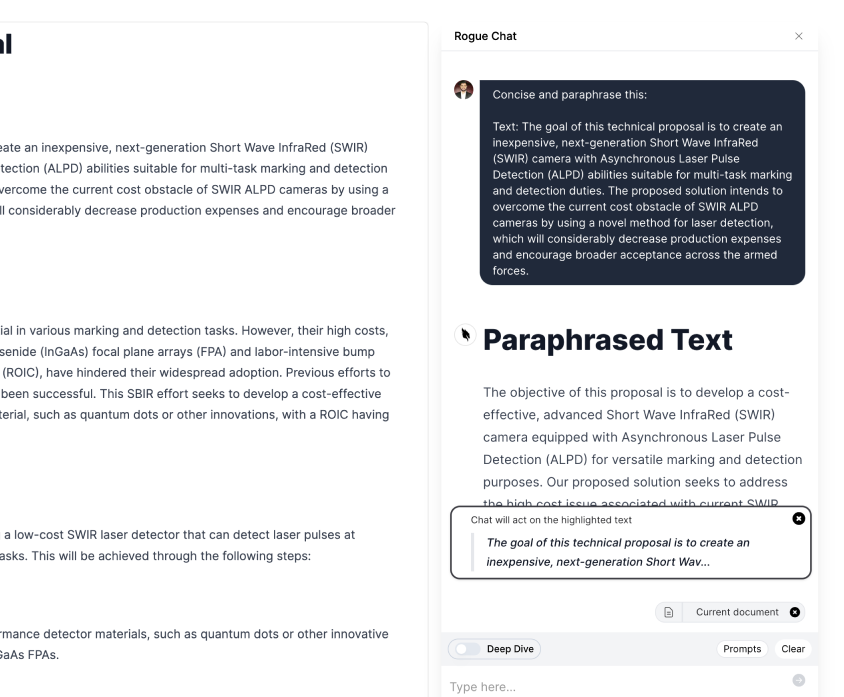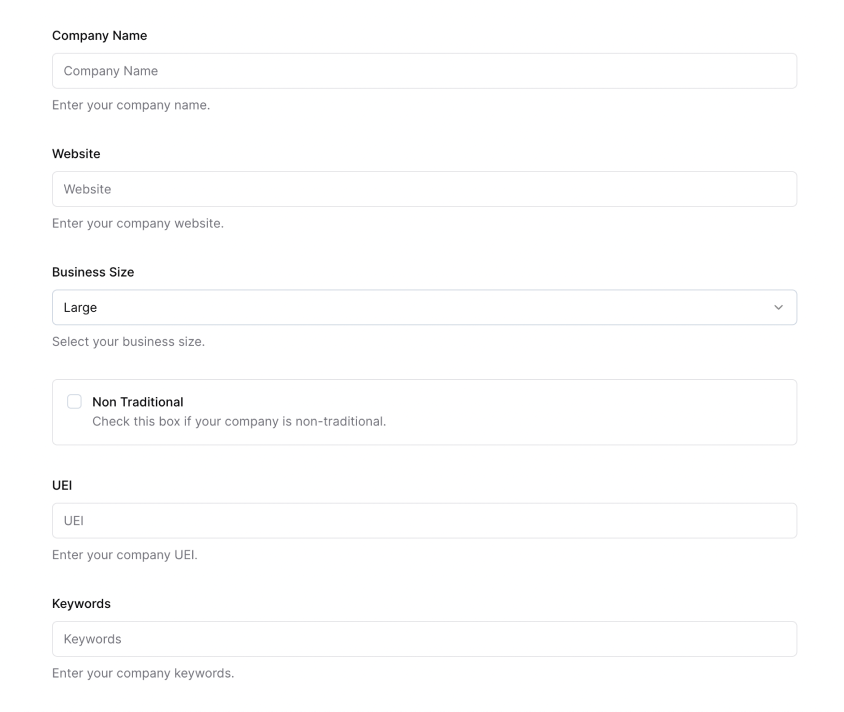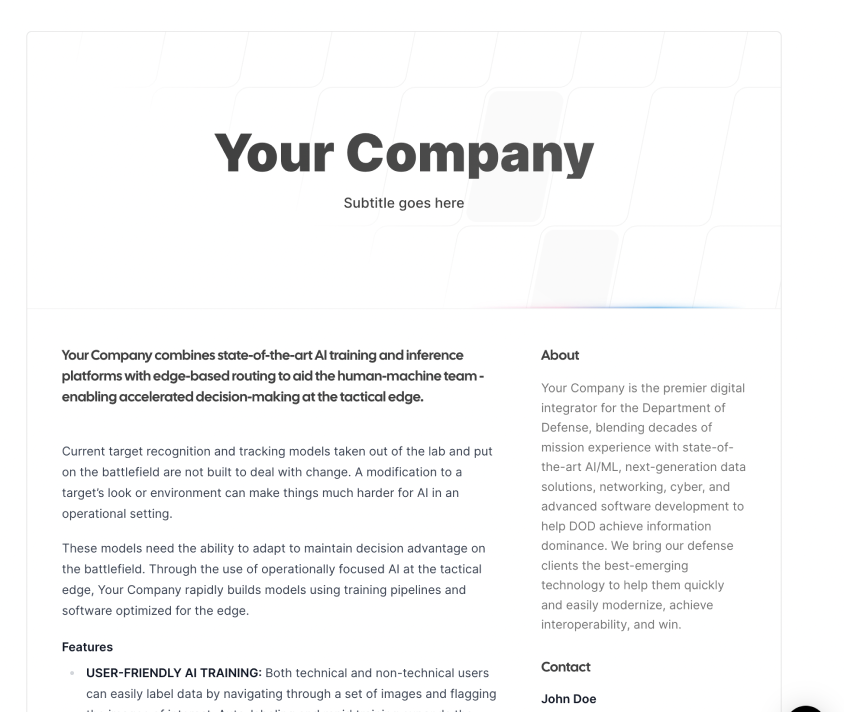
8.0 Shortcuts in GovCon
There are some short cuts, tl;dr: they cost money
Shortcuts in GovCon

Not to get too philosophical here; the age old Murphy's law rings true time and again:
"The easy route is always mined"
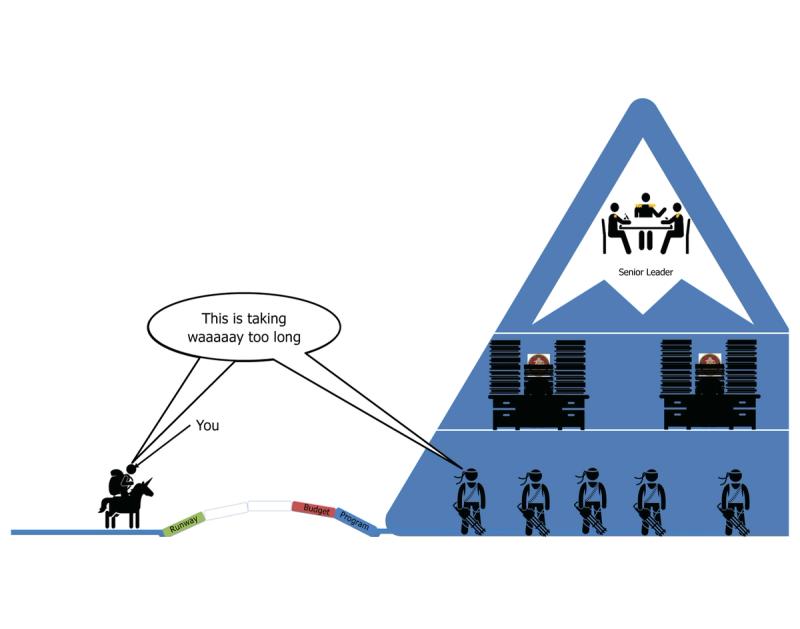
Does anyone like the time it takes to move money through the gears of government?
No.
No one.
Not the users or the vendors, not the leadership or even the folks in the middle. But it's there for a reason, like it or not.

That said, there are a multitude of folks in the ecosystem offering shortcuts to success.
Not, let me be clear: nothing is a monolith, there are a lot of great folks doing great advisory work.
Another note: I fully support the folks who spent their entire lives - from their 18th birthday until they were a stone's throw from social security - serving their country becoming advisors to companies who are trying to understand bureaucracy they spent thier lives living in and leading.
We're not throwing shade, but the uninitiated should know what WRONG looks like, so they can avoid it.
note: if this offends you, now might be a good time for self-reflection.
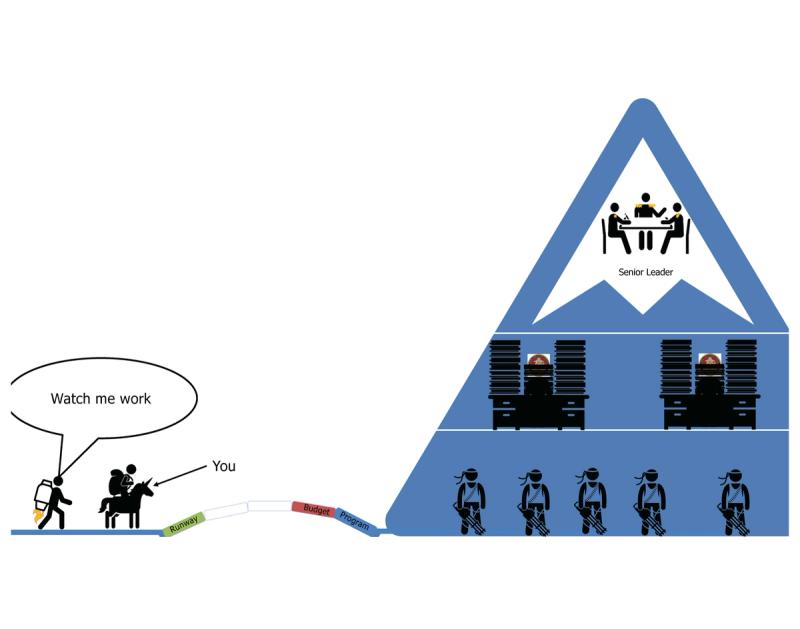
Folks who retie from the military, whether they were "green suiter" uniformed service members or DoD civilians have a lot of two things you don't:
1. knowledge of the mountain
2. relationships with people you want to talk to
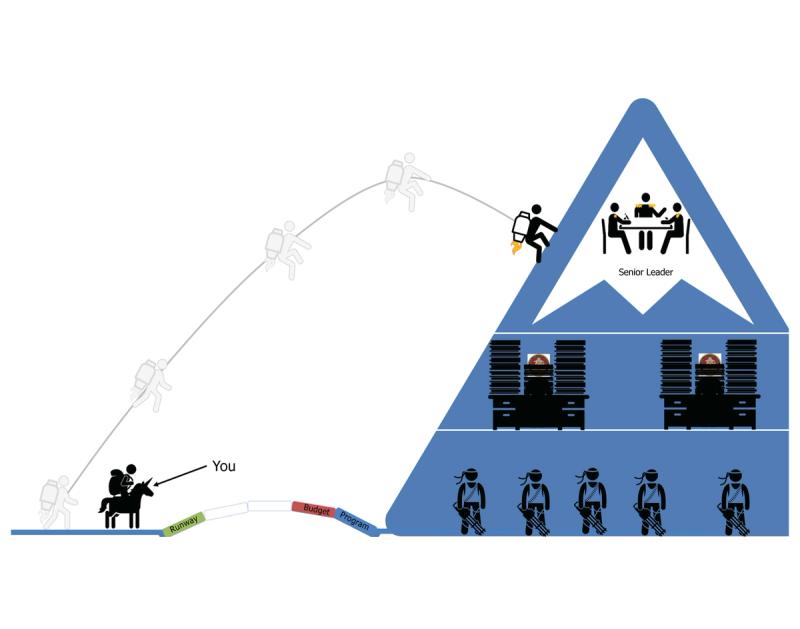
A lot of these folks can directly call up their peers who are still serving, folks they went to school with, perhaps they worked together.
This is not a bad thing, it can be great for connecting with an important segment of the DevBurOps cycle.
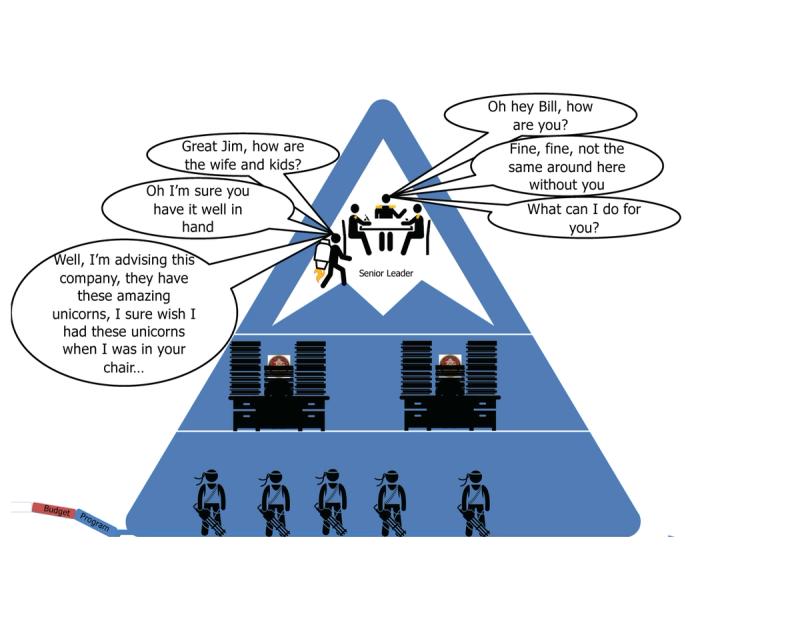
The issue comes when you think you're going to jump straight over the valley, lock in a GO/FO ("go-foe") and get the senior pull to drive budget allocation and user adoption.
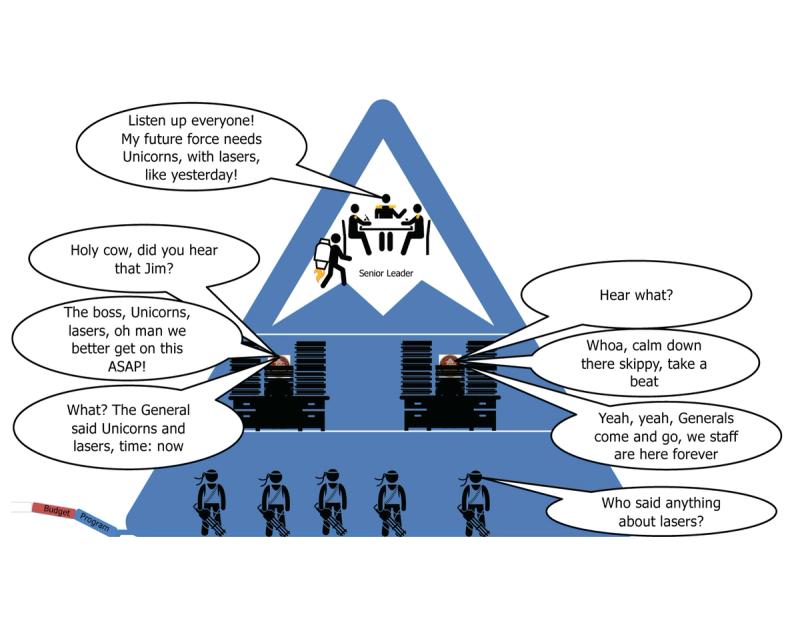
Going back the sequence diagram at the beginning of this guide, going from the bottom of the mountain (users) to the top of the mountain (senior leaders) has an adverse effect on your esteem with the middle layer folks.
Here's the thing, GO/FO/SES type rotate (enter and leave the job) every two years, on average.
So, think about that in reality, imagine you just took a new job in charge of 1,000-10,000 people.
It takes about 3-6 months for them to get their feet under them and figure out what's going on.
At which point they are ready to take some action on their strategic plan, which each should have if they're in charge of something that big.
They have about a year to make SOMETHING happen.
Then they're 3-6 months away from either retiring or moving to their next gig and they "don't want to make decision for their successor", meaning that they don't take action that they won't see through. Which, frankly is pretty fair.
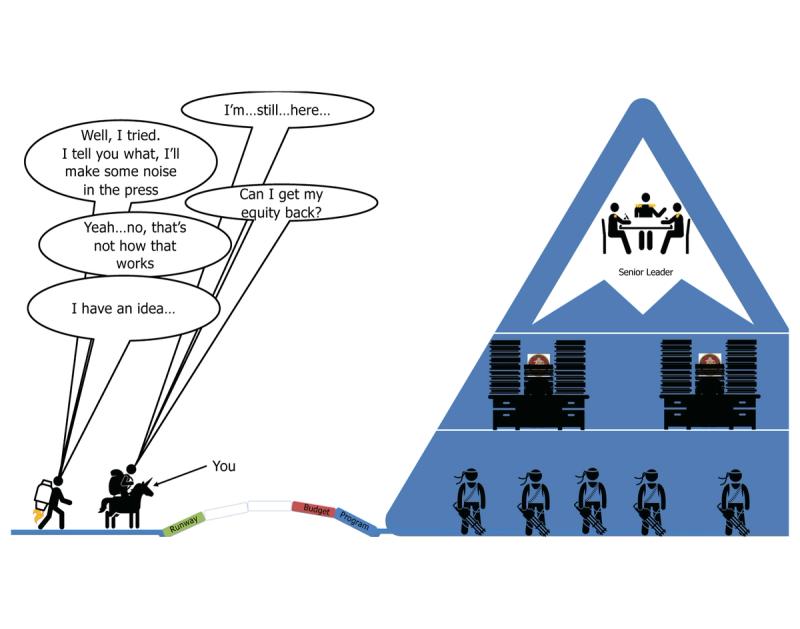
At the end of the day, the consultant get's thier due either way.
There's a few ways consultants get their due:
1. Retainer - you plunk down green and they work on your behalf
2. Fee - same as 1. but you pay per cup of coffee
3. Equity - you give them equity and make them a "board member"
In each case the incentives are never totally aligned, except maybe #3, in the case of #3 they are seldom board advisors to only one board at a time, so watch the diffusion of political/social capital and time/attention span.
AGAIN: nothing is a monolith and there are PLENTY of folks who do this well and above board. There's other that don't, don't be enamored with people who have fancy "Former <insert title here>", do your homework.
Now, let's talk about another common feature in the space; the legislative affairs specialist.
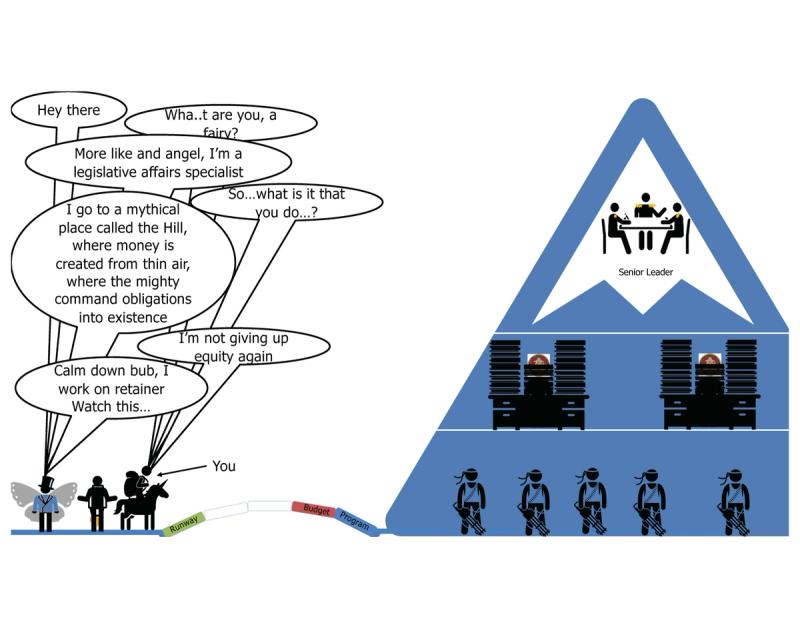
I'm not here to stand on a pork barrel soap box, there's good reason for Congressional "earmarks", I'm just here to share the facts:
First, you want to deal with the House of Representatives. Why?
Power of the purse.
I'm not here for schoolhouse rock, if you don't know what that means lmgtfy
Within the House, you probably want to focus on one of three committees:
HAC: https://appropriations.house.gov/membership-118th-congress
HASC: https://armedservices.house.gov/
HAC-D: https://appropriations.house.gov/subcommittees/defense/defense-subcommittee-members
All you have to do is:
1. Find a Congressperson in your district, or a district in which you have interests, or could have interests, or impact. (if you are not so lucky...sorry)
2. Go to their site.
3. Look for something like "earmark request", like this: https://mikerogers.house.gov/services/earmark-requests.htm
4. Fill out the request and submit...
You have to get this done early in the year, ideally before the bill gets out of subcommittee.
Want an idea about what you need to submit, most of it is in the open, check it out: https://mikerogers.house.gov/uploadedfiles/component_rebuild_shop.pdf
Try to keep your ask under 5-10 million the FIRST time.

Now, will you get your earmark? Maybe.
Probably not.
You didn't do any sales.
This is just another kind of sales.
You have to engage with these folks, go to the hill, meet with them in their offices, convince them that your thing is going to bring growth, prosperity, innovations, <insert current hot buzz word here>, to their district while also protecting our troops.
Meet with them in your district when they're on recess.
Or...
Pay a consultant to do all that.
They know the hill, they probably came from there. just like the jet-pack GO can fly straight to the top of the mountain, these folks can fly straight to Mount Olympus and speak the same language, make sure your thing is just what they are looking for with their limited earmarks.
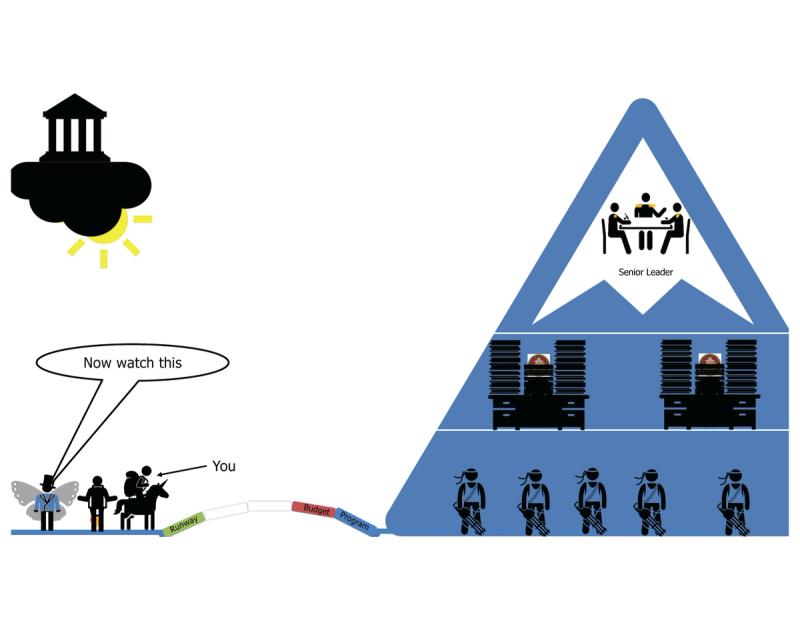
Now, is that money going to immediately come directly to your pocket?
NO!
That's not how this works.
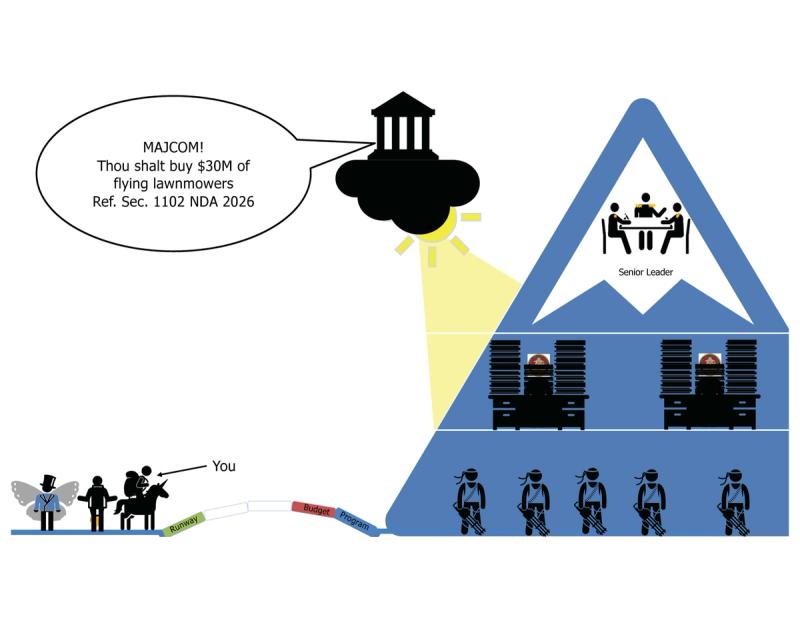
Congress puts, in the next NDAA, a mark that says $$$ is allocated to such and such for so and so.
That money flows down to the Pentagon.
The Pentagon puts it in an account, a Program Element if you will.
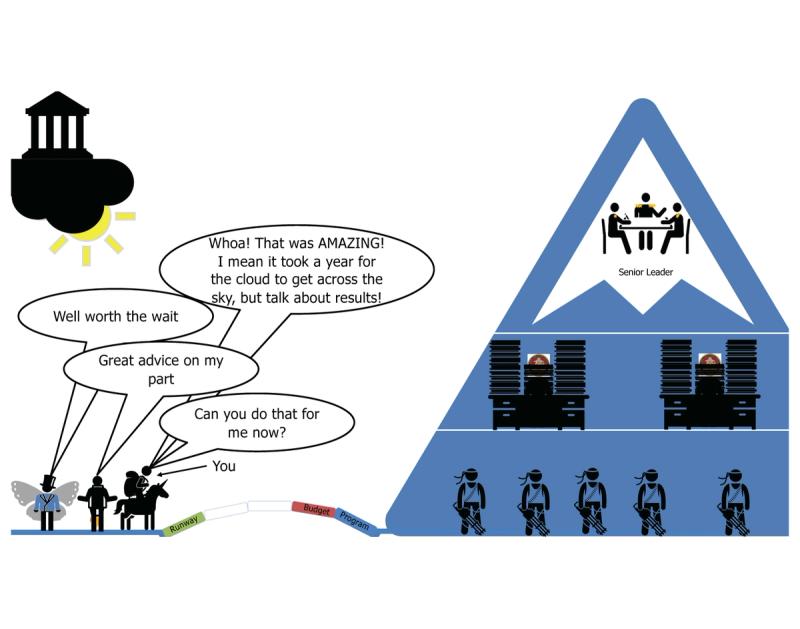
So...a little review here: what home work do you think you need to do in order to be successful and have that money flow into your revenue?
That's right!
Find a PM in the middle who has a PE that buys stuff for your users!
Simple. Not easy.
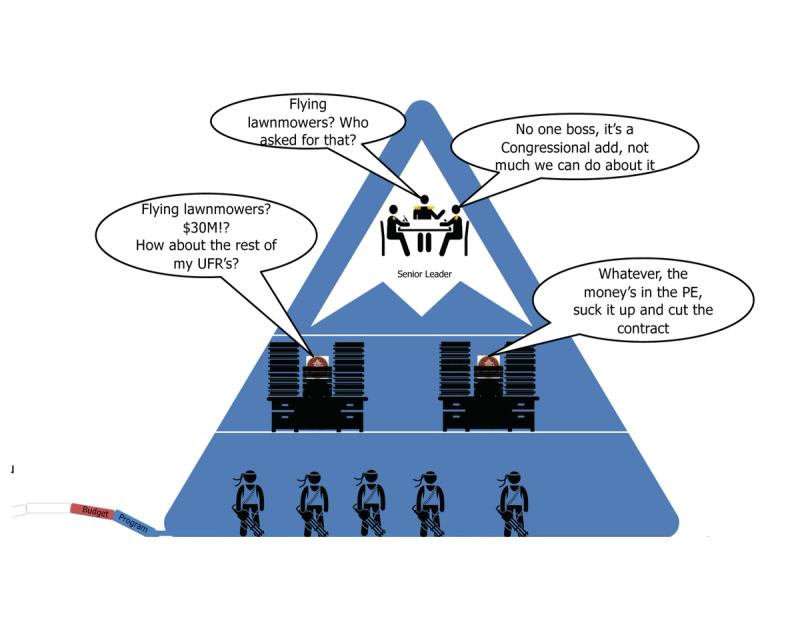
So once again, if you want to make this loop close, you need to engage with your customer.
Some customers (PM's) don't like getting earmark money forced upon them, so you really shouldn't do it...
Now, let's be blunt here, anyone who has been the recipient of these good idea fairy, earmark, top-down force downs knows that the following:
1. Getting a first chunk of cash, doesn't mean you'll get a second
2. If you force tech on end users who don't want it, it might backfire over the long run
3. If you throw stuff at the end users and you haven't thought through what happens after it lands in their lap, it probably wont go well...
It might look like this...
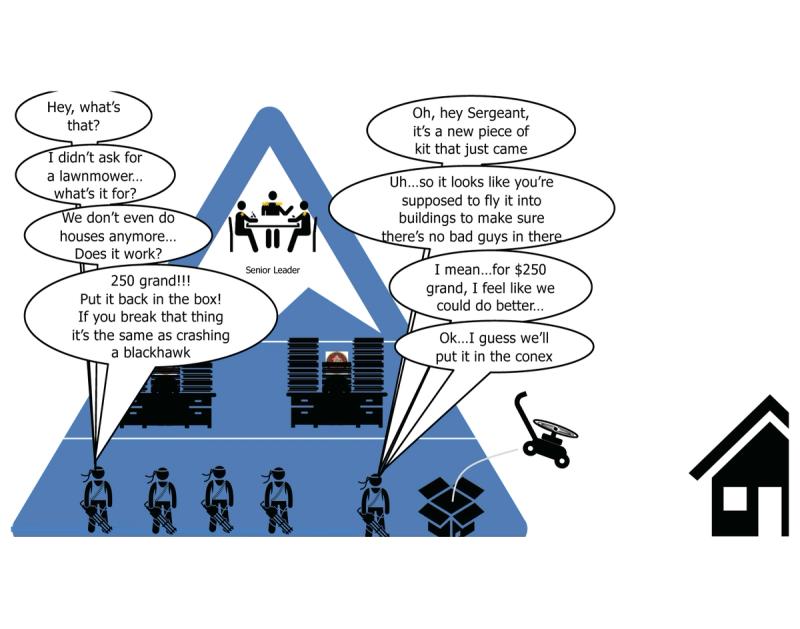
Do you have any idea the ramifications if a servicemember breaks your TRL7 prototype?
Probably not.
But they do.

Have you thought about who, what, when, where, why, and how someone might actually use your thing? like really visualize it. Now visualize it in the cold, rain, sea state 9...yeah...

Military folks are used to being treated like lab rats, but after the whole burn pit thing, they're getting touchy about health hazards, so at the very least make sure your thing is safe. Even if it is safe, there's no assurance that product market fit is going to find itself simply because you managed to get some money to flow and some units to get delivered.

If you've never been in the military, you have NO IDEA what kind of shenanigans might go on with your tech. There is no force of creative destruction that rivals a military bored enlisted person on a field exercise or deployment.
Also, a word for these folks: they don't have a whole lot of time off, or spare time in their annual training schedules.
There is, at any one time, a mountain of things they have trained on at some point in their career, which they may be expected to use at some point in the future, which they only have a foggy idea how to use.
Do your best not to make your thing one of those things.
Think about training, it's always an after thought for vendors.

...at the end of the day, the vast majority of new, nifty, non-standard things end up here, wedged between the holy grail, lost ark, and those smart touch marker boards that someone thought were a good idea 5 years ago.
Take a guess what that does to your annual recurring revenue.
Hint: it rhymes with frown.
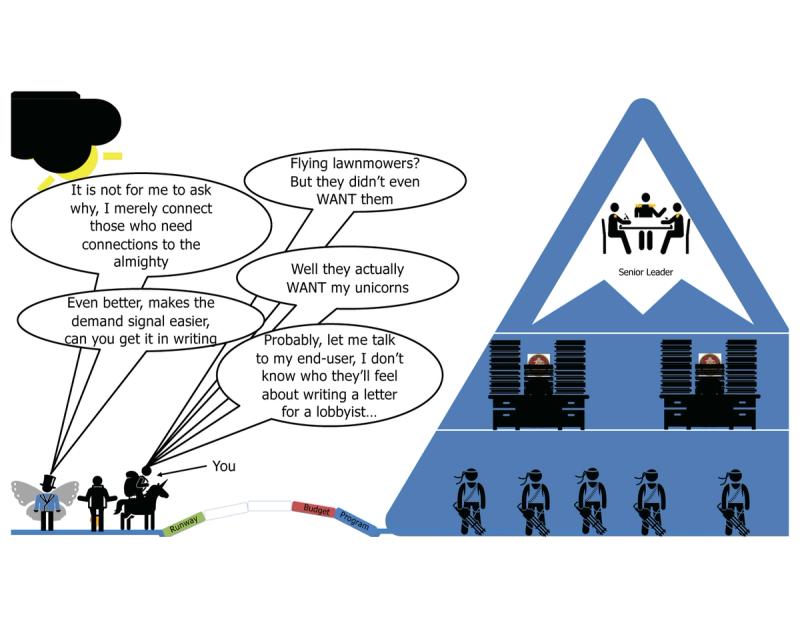
Is this all the folks who "work the hill"?
No.
But it is SOME of the people.
So, from the senior leader, customer, and user perspective, how are you different?

How are you not just the latest in a long line of "I built a better mouse trap" vaporware vendors who sought the shortcut to the promised land?
Because you better bet your bottom dollar, they've seen one before.
What's worse: their life and thier ability to do their job may very well have been made worse as a result.
So do yourself a favor:
1. talk to the customer
2. talk to the users
3. think about how your thing can be a bolt-on value add
To do #3 , you may want to turn to trusty old DOTMLPF-P!
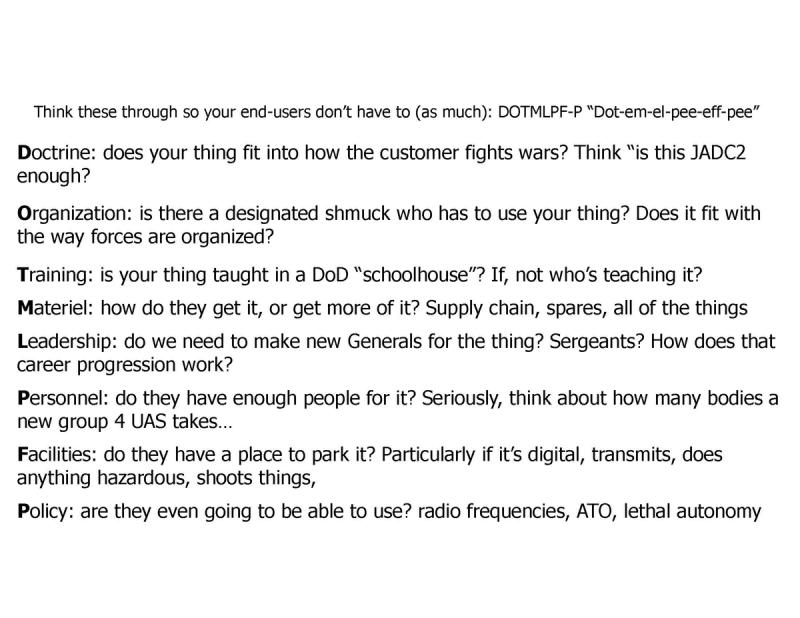
This is basically ABC's for anyone who has worked in requirements or program management.
For formal acquisition programs, they typically do a full analysis of these factors to assess the impact a new thing will have on the force structure.
Think about it: if the lawn mower peddler had considered DOTMLPF-P, how many of those conex scenarios would they avoid?
Most, if not all.
Also, your customer will likely have to do an analysis one way or another if you want them to buy your thing more than once, so why not give them a head start and at least think about it for them, and have some answers.
Sign up for Rogue today!
Get started with Rogue and experience the best proposal writing tool in the industry.

